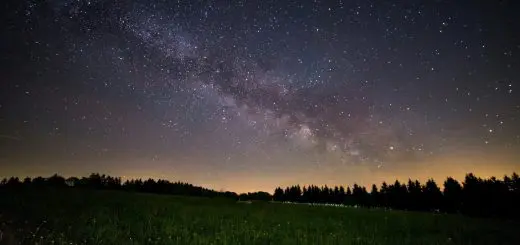Shamanism: Ancient Spiritual Practices

Looking for more amazing products? Check out our online store and explore our collection here! Happy shopping!
Before diving in, please note: This post is for informational purposes only. If you’d like to know more about how we approach topics, feel free to check out our friendly Disclaimer Page.
Hey there, amazing readers! 
We’re committed to delivering quality posts, and your support (even just sticking around despite the ads) means everything to us. So, bear with us, and thanks for helping us keep the good vibes rolling. Now, on to the fun stuff!
TRANSLATE BUTTON AT THE END OF THE ARTICLE
Introduction to Shamanism
Shamanism is an ancient practice that has been a fundamental part of various cultures worldwide for centuries.
Shamans are seen as spiritual intermediaries who communicate with the spirit world on behalf of their community.
These individuals are believed to have the ability to heal, divine, and guide others through spiritual realms.
Shamanism is not confined to a specific religion but is a universal practice found across different civilizations.
The core belief of shamanism revolves around the interconnectedness of all living things and the belief that everything has a spirit.
History of Shamanism
The history of shamanism dates back thousands of years, with evidence of shamanic practices found in archaeological sites around the world.
Shamanism is believed to have originated in Siberia and spread to Asia, Europe, Africa, and the Americas through migration and cultural exchanges.
In ancient societies, shamans held significant roles as healers, spiritual leaders, and mediators between the physical and spiritual realms.
These individuals were revered for their wisdom, mystical powers, and ability to commune with the unseen forces of nature.
Shamanic Beliefs and Practices
Shamanic beliefs are centered around the idea that everything in the universe is interconnected and that all living beings possess a spirit or soul.
Shamans believe in the existence of multiple worlds, including the physical world, the spiritual realm, and the underworld.
Shamanic practices often involve rituals, ceremonies, and initiations that connect the practitioner with the spirit world.
These practices may include drumming, chanting, dancing, and the use of sacred plants to induce altered states of consciousness.
Role of Shamans in Ancient Societies
Shamans played a crucial role in ancient societies as spiritual leaders, healers, and advisors.
They were responsible for maintaining the balance between the physical and spiritual worlds, ensuring the well-being of their community, and guiding individuals through life’s challenges.
Shamans were consulted for healing illnesses, divining the future, and resolving conflicts within the community.
Their knowledge of the spirit world and their ability to communicate with ancestral spirits made them highly respected figures in society.
Shamanic Rituals and Ceremonies
Shamanic rituals and ceremonies are an essential part of shamanic practice and are conducted to connect with the spirit world, seek guidance from the ancestors, and heal physical and spiritual ailments.
These rituals often involve the use of symbolic objects, such as drums, rattles, feathers, and crystals, to create a sacred space for communication with the spirits.
Ceremonies may include chanting, singing, dancing, and the burning of herbs or incense to purify the space and invoke spiritual energies.
Tools of the Shaman
Shamans use various tools and instruments to aid them in their practice, such as drums, rattles, feathers, crystals, and herbs.
These tools are believed to help shamans enter altered states of consciousness, communicate with spirits, and perform healing rituals.
The drum, in particular, is a powerful tool used by shamans to induce trance states and journey into the spirit world.
Rattles are used to create rhythmic vibrations that help shamans connect with spiritual energies, while feathers are seen as symbols of communication with the divine.
Shamanic Healing Techniques
Shamans utilize a variety of healing techniques to address physical, emotional, and spiritual imbalances in individuals.
These techniques may include energy healing, soul retrieval, extraction, and psychopomp work.
Energy healing involves channeling spiritual energy to restore harmony and balance within the body, while soul retrieval is a process of retrieving lost parts of the soul due to trauma or illness.
Extraction involves removing negative energies or entities from the energy field, and psychopomp work is guiding the souls of the deceased to the afterlife.
Shamanism in Different Cultures
Shamanism has been practiced in diverse cultures worldwide, including Siberia, Mongolia, Africa, Australia, the Americas, and parts of Europe.
Each culture has its unique shamanic traditions, rituals, and beliefs, but they share common themes of connecting with the spirit world, healing, and spiritual guidance.
In Siberia, shamans known as Tuvans use overtone singing and throat singing in their rituals, while in Africa, Sangomas communicate with ancestral spirits through divination and trance.
In the Americas, indigenous tribes use sacred plants like ayahuasca for spiritual healing and vision quests.
Modern Interpretations of Shamanism
In modern times, shamanism has experienced a resurgence as people seek alternative forms of healing and spiritual connection.
Many individuals are drawn to the wisdom of shamanic practices to find meaning, purpose, and healing in their lives.
Contemporary shamans adapt traditional techniques to suit the needs of the modern world, incorporating elements of psychology, energy healing, and mindfulness practices.
Shamanic practitioners offer workshops, retreats, and online courses to teach others about shamanism and its transformative power.
Controversies Surrounding Shamanism
Despite its enduring popularity, shamanism has faced criticism and controversy, mainly due to cultural appropriation, exploitation, and misrepresentation.
Some individuals and organizations have commercialized shamanic practices, leading to concerns about authenticity and ethics.
Additionally, the use of sacred plants in shamanic rituals has raised legal and ethical issues, particularly regarding sustainability and conservation.
Critics argue that the commodification of shamanism dilutes its spiritual significance and undermines its cultural roots.
Shamanism and Ecological Awareness
One of the core principles of shamanism is the belief in the interconnectedness of all living beings and the need to respect and honor the natural world.
Shamans view nature as a sacred and sentient entity that must be protected and preserved.
In a world facing environmental crises and climate change, the teachings of shamanism can offer valuable insights into sustainable living practices, ecological stewardship, and harmony with the earth.
Many contemporary shamans advocate for environmental activism, conservation efforts, and eco-friendly lifestyles as a way to honor the interconnected web of life.
The Future of Shamanism
As interest in spirituality, holistic healing, and indigenous wisdom continues to grow, the future of shamanism appears promising.
Shamanic practices have the potential to offer profound healing, transformation, and spiritual growth to individuals seeking a deeper connection with themselves and the world around them.
The integration of shamanic teachings with modern science, psychology, and mindfulness practices can lead to innovative approaches to healing and personal development.
As we navigate the complexities of the modern world, the ancient wisdom of shamanism may provide a guiding light towards greater self-awareness, compassion, and unity with all beings.
Conclusion
In conclusion, shamanism is an ancient spiritual practice that has stood the test of time, offering profound insights, healing, and guidance to individuals across cultures and generations.
The history of shamanism is rich and diverse, with rituals, beliefs, and practices that reflect the interconnectedness of all living things.
As we look towards the future, shamanism has the potential to inspire ecological awareness, personal growth, and spiritual transformation in a world in need of healing and harmony.
By honoring the wisdom of the shamans and embracing the teachings of the spirit world, we can cultivate a deeper connection with ourselves, each other, and the earth.

The Enlightenment Journey is a remarkable collection of writings authored by a distinguished group of experts in the fields of spirituality, new age, and esoteric knowledge.
This anthology features a diverse assembly of well-experienced authors who bring their profound insights and credible perspectives to the forefront.
Each contributor possesses a wealth of knowledge and wisdom, making them authorities in their respective domains.
Together, they offer readers a transformative journey into the realms of spiritual growth, self-discovery, and esoteric enlightenment.
The Enlightenment Journey is a testament to the collective expertise of these luminaries, providing readers with a rich tapestry of ideas and information to illuminate their spiritual path.
Our Diverse Expertise
While our primary focus is on spirituality and esotericism, we are equally passionate about exploring a wide range of other topics and niches 

To ensure we provide the most accurate and valuable insights, we collaborate with trusted experts in their respective domains 
Our blog originally focused on spirituality and metaphysics, but we’ve since expanded to cover a wide range of niches. Don’t worry—we continue to publish a lot of articles on spirituality! Frequently visit our blog to explore our diverse content and stay tuned for more insightful reads.
Hey there, amazing reader! 
Check out our store here and take a peek at some of our featured products below! Thanks for being awesome!












